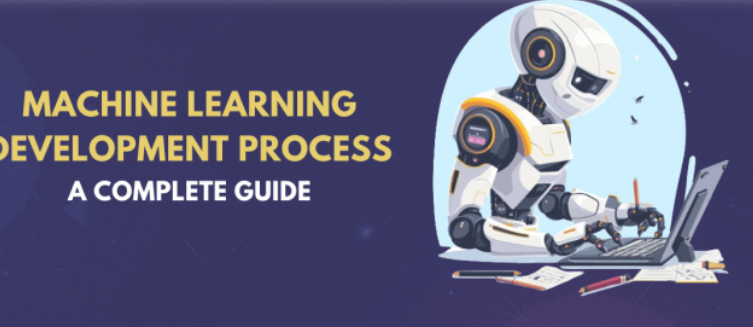Machine Learning 101: What It Means and Why It Matters
Machine learning has become the cornerstone of modern technology-from personalized recommendations on streaming services to real-time language translation. But what is machine learning per se, and why does it matter so much? This article will first explain the basic concept of machine learning, then its different types, how it works, and why it is crucial today.
1. What is Machine Learning?
It is that part of AI that equips computers with the ability to learn from and make decisions based on data without explicit programming. While doing so, the system starts to learn a pattern in the data and uses those patterns to create predictions that turn out to be more accurate after the processing of large chunks of data. Thus, the “learning” factor basically evolves around the concept of machines getting better and more accurate with an increased intake of data, all without direct human intervention.
2. How Does Machine Learning Work?
Fundamentally, through algorithms—sets of instructions designed to solve problems—machine learning analyzes data, detects patterns, and makes informed decisions. In summary, this is how the process works:
- Data Collection: Machines learn through data. This data could be relayed from images, text, numbers, and audio files.
- Data Preprocessing: The actual data obtained is usually dirty and disorganized. In this stage, the data is cleaned, tidied up, and reformatted in a form that could be used by a machine learning algorithm.
- Model Selection: There are different types of algorithms for performing different tasks. Example: A classification model would classify emails as “spam” and “not spam,” and a regression model would be used to predict a house price depending on location and size.
- Training the Model: A machine learning algorithm “learns” by using calculations over the training data. It predicts and corrects itself based on its errors, and over time it becomes accurate in the results.
- Testing and Validation: A different dataset is used to test the performance of the model. If the model makes good accuracy, it is ready for deployment into a real-world environment.
3. Types of Machine Learning
There are many types of machine learning. Each has its unique methodology for learning from data. The three broad types of machine learning include:
a. Supervised Learning
In supervised learning, the machine is trained over labelled data-datasets consisting of input-output pairs where the output, or correct answer, is already known. The algorithm learns from those examples and then uses its understanding to new, unseen data. Common uses include email classification, speech recognition.
b. Unsupervised Learning
Unlike in supervised learning, unsupervised learning consists of data without labeled outcomes. The algorithm explores the data and searches for hidden patterns or relationships. Clustering is a form of unsupervised learning and is very often used in market segmentation for grouping customers who behave similarly.
c. Reinforcement Learning
In reinforcement learning, a machine learns through trial and error by interacting with an environment. The algorithm is awarded positive results and penalized for negative results, hence learning complex strategies with time. This is being used extensively in robotics and gaming.
4. Real-World Applications of Machine Learning
The detailed spectrum of machine learning itself makes numerous industries stride forward through automation of processes, sharper decision-making, and new ways of looking at data. Some of the vital applications include:
- Healthcare: Medical image analysis by algorithms, prediction of outbreaks of disease, and facilitating drug discovery with quicker and more accurate diagnostic processes.
- Finance: Banks and financial institutions use machine learning in fraud detection, loan approvals, and stock market forecasting to minimize risk and optimize profits.
- Retail: Machine learning powers recommendation engines capable of suggesting personalized products to customers based on either their previous purchases or items viewed.
- Transportation: Most of the functions involved in self-driving cars and traffic control rely heavily on the extensive machine learning that is used to analyze the input data from sensors and cameras to allow for safer, more efficient roadways.
NLP can enable computers to understand and generate human language, making it possible for chatbots, voice assistants, and language translation services to operate.
5. Why is Machine Learning Important?
The importance of machine learning falls under its ability to automate complex tasks and mine insights out of enormous volumes of data that would be beyond the physical capability of humans. Here’s why machine learning matters:
- Improved Efficiency: Automation of repetitive tasks by machine learning frees up more time for employees to attend to responsibilities at higher levels.
- Better Decision Making: Machine learning makes data-based insights available that enhance the quality and speed of decision making across industries, from healthcare to finance.
- Personalization: Whether it is Netflix recommending your next movie or Spotify building playlists, AI fosters personalization that makes customers very happy.
- Scalability: Machine learning models can process large datasets and deal with volumes of information that are really beyond the capacity of human beings to analyze, hence ideal for businesses that hope to derive value from big data.
6. Common Machine Learning Algorithms
Machine learning algorithms form the backbone of any ML system. Here is a list of some well-known ones:
- Linear Regression: This algorithm is used to predict a numeric outcome by considering the relationship between different variables. For instance, one could predict the price of a house based on its size and location.
- Decision Trees: Splits data into branches according to the values of features. Most often used for classification tasks, such as spam versus not spam emails.
- K-Nearest Neighbors (KNN): Performs classification by considering the most similar examples around an input data point within a dataset. Used within recommendation systems and image recognition.
- Support Vector Machines (SVM): Sets boundaries between categories with margins so as to maximally separate the classes. Useful for performing text classification and face recognition.
- Neural Networks and Deep Learning: Neural networks are modeled after the human brain. They boast a complex processing power that enables them to build the most accurate vision and voice recognition systems.
7. Challenges in Machine Learning
Amidst this much potential of machine learning, there exist many more challenges, too:
- Data Quality: The machine learning algorithms will require good-quality data to show fit performance. Flaws will be present on account of incomplete or biased data.
- Interpretability: Most of the complex machine learning models, like deep learning, are inherently tough to interpret and hence non-intuitive to understand their decisions or inferences.
- Privacy Concerns: Innovations driven by huge datasets, especially of personal information, raise essential questions about privacy. There is a fine balance between innovating on data and retaining user privacy.
- Ethics and Bias: Most machine learning systems may inadvertently learn biases in the data they have been trained on and hence produce either incorrect or unethical outcomes.
8. The Future of Machine Learning
The outlook for machine learning is fantastic, as improvements in AI, computing power, and data collection keep its horizons expanding. Growth areas will be:
- Explainable AI: As machine learning becomes more integral to the core of everyday decisions, there is a growing need for algorithms that can explain their reasoning.
- Federated Learning: Training model architectures across decentralized devices or servers in such a way that sharing can be done without losing the advantage of privacy is an upcoming approach in sectors that deal with sensitive information.
- Improved Natural Language Processing: As research in NLP continues to get better, we should be assured of better language understanding, translation, and generation from voice-activated tools, customer service bots, and even content creation tools.
AI-Driven Creativity: Machine learning is already playing a part in creative domains, be it art, music, literature, or design, opening new frontiers of collaboration between humans and machines.
Conclusion
Machine learning has moved from being a theoretical concept to a technology disrupting the face of the world. As we continue to discover its abilities, machine learning is offering some exciting prospects: from changing the working scenario of industries and creating personalized experiences, to enabling operations to become much more efficient. The path to realizing this complete potential, however, must overcome a number of challenges: data quality, interpretability, and ethical considerations. Understanding the basics of machine learning is important in an age where decisions are the rule of the day and based on data; it is among those promising and with greater impact technologies of our century.

Also Read :
